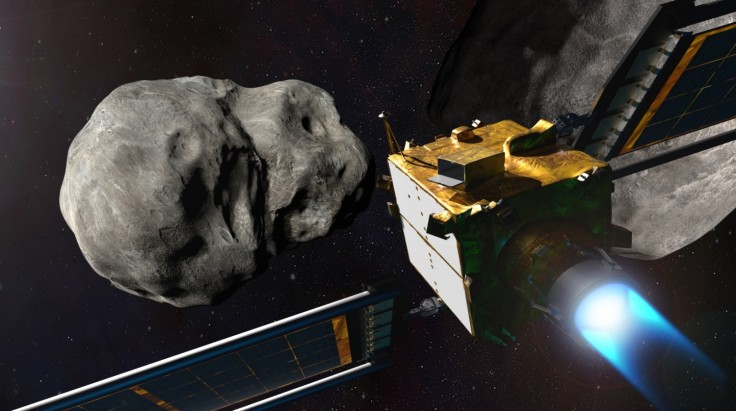The National Aeronautics and Space Administration (NASA) is confident that its Double Asteroid Redirection Test (DART) mission will smash into the asteroid moonlet Dimorphos on Monday, September 26.
The mission, which was launched on November 2021, is seeking to learn if it is possible to change the course an asteroid is currently on.
Here is what you have to know about the anticipated impact that should take place next week if things go as planned:
NASA's DART Mission Expected to Smash Into Asteroid on September 26

DART team members from NASA as well as John Hopkins University Applied Physics Laboratory (JHUAPL) are confident that the mission will be a success after years of careful planning, according to a report by Space.
DART is traveling at the speed of 4.1 miles per second as of writing and is expected to smash into Dimorphos at 7:14 p.m. EDT on Monday.
Should the mission succeed, DART will "shift Dimorphos' orbital period enough to alter its gravitational effects on the larger Didymos, changing the trajectory of the pair." Didymos is a larger asteroid which Dimorphos orbits.
"It's quite frankly the first time that we are able to demonstrate that we have not only the knowledge of the hazards posed by these asteroids and comets that are left over from the formation of the solar system, but also have the technology that we could deflect one from a course inbound to impact the Earth," Lindley Johnson, planetary defense officer at NASA, said during a briefing that took place on Thursday.
The team assures that they have 21 contingencies in place should the DART mission move off-course.
Asteroid Moonlet Dimorphos and Asteroid Didymos
Discovered in 2003, asteroid moonlet Dimorphos is 560 feet wide. It is located around seven million miles away from Earth.
As previously mentioned, it orbits the asteroid Didymos and two are members of the same binary system. Per a report by the Los Angeles Times, Dimorphos orbits Didymos at a distance of just less than a mile away.
Didymos was discovered in 1996 and scientists believe that "Didymos is spinning so fast that scientists believe it flung off material that eventually formed a moonlet," which eventually became Dimorphos.
Related Article : NASA's DART Asteroid Mission Risks Deforming the Moonlet Dimorphus When They Collide
What Will Happen if the DART Mission Misses?
Despite the confidence of the DART mission team that it will be a success, it cannot be ignored that there is a possibility that things may not go as planned. So what happens to the mission then?
According to the report by Space, the team will first process whatever data the DART mission is able to collect. After that, they will explore the possibility of the DART mission smashing into a different object instead.









